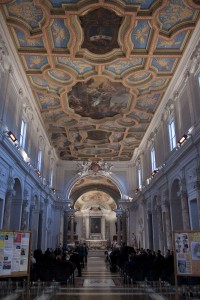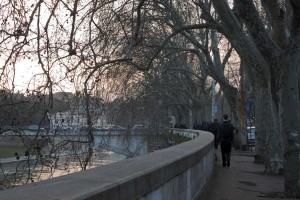The lifeblood of the church
Today, we continued our Lenten Station Masses at Sant’Anastasia. On the way to this church, we walked past the Circus Maximus, a great field dedicated to sporting events in Ancient Rome. Although Roman charioteers would have entertained the crowds in the Circus Maximus, this sight was also the place where many martyrs gave their lives for their faith in Christ.
St. Anastasia was martyred during the Diocletian Persecution in the late third century in what is today Serbia, making the location of this church very appropriate. The church itself was built in the late fourth century and St. Jerome, who came from the same region as Anastasia, is said to have often celebrated Mass here.
While little is known about St. Anastasia herself, it is moving to know that this martyr’s name means “resurrection” and that her feast day was traditionally celebrated on December 25. She therefore connects Christ’s birth, death, and resurrection and shows us the true purpose of our Lord’s coming. It was a nice reminder for us as we entered the church that as we continue through Lent, we do so with the hope of Easter!
Learning how to pray
During the homily, the priest encouraged us to remember the great gift Jesus has given us in teaching us how to pray. We do not pray like the pagans do, hoping that the more we shout the better God will hear us. Rather, we trust in the goodness of our Loving Father who has taken the initiative in meeting us. As the Catechism so beautifully reminds us, “In prayer, the faithful God’s initiative of love always comes first; our own first step is always a response.” In sending His own Son to Earth to suffer, die, and rise from the dead, God has taken the first step in our relationship with Him. Now it’s our turn to accept His invitation and respond with all our hearts.
Written by:
Christopher Seith
Photos: Fr. Justin Huber



